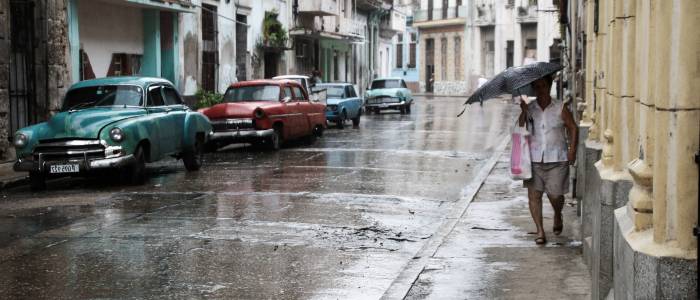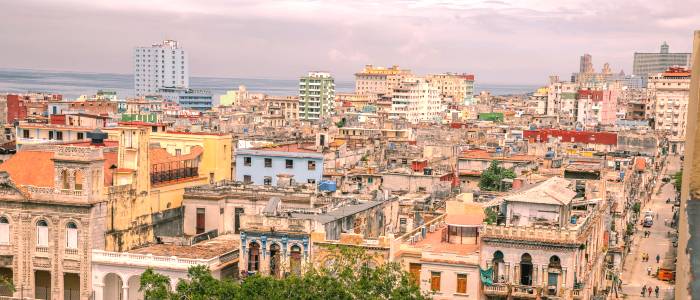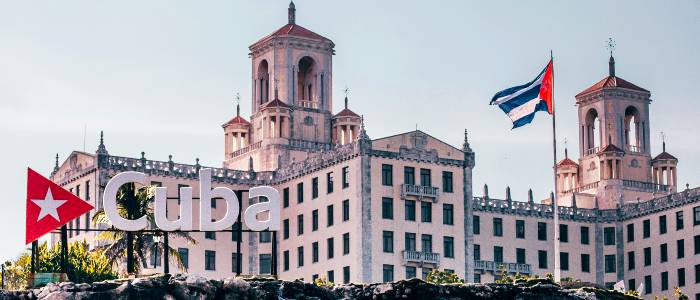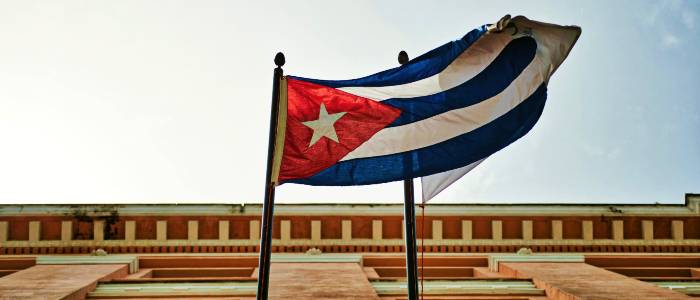
The climate of Cuba is tropical, with warm weather year-round, making it a perfect destination for tourists. However, the weather can vary slightly depending on the time of year.
Knowing Cuba’s weather by month can help you plan your trip ahead of time. In this guide, you can find what to expect from the weather in Cuba, from winter’s mild temperatures through to the hurricane season.
What Is the Climate of Cuba?
Cuba’s weather is affected by the Caribbean Sea, the trade winds, and occasional hurricanes. See below for a breakdown of Cuba's climate by month.
Weather in Cuba by Month
Cuba experiences a moderate climate with variations across the seasons. The island enjoys a dry season from November to April and a wet season from May to October.
Weather in Cuba in January
January is one of the coolest months in Cuba, with average maximum temperatures ranging from 26°C to 30°C (78°F to 86°F). The sea’s temperature is around 26 °C (78°F). During this time, Cuba enjoys about 7-8 hours of daily sunshine.
The climate tends to be slightly warmer in cities like Santiago de Cuba and Trinidad on the south coast. North coast cities such as Havana and Varadero usually experience temperatures around 27°C (80°F).
This month is part of the dry season, so any rainfall is usually brief and intense. Still, January is one of the best months to visit Cuba, with clear blue skies, warm temperatures, and low humidity.
Weather in Cuba in February
The climate in February is characterized by low humidity. In Havana and Varadero, the maximum temperatures average around 27°C (80°F),while temperatures are slightly higher on the south coast, reaching 30-31°C (86-88°F).
The island enjoys about 7 to 8 hours of sunshine daily during this month. The sea’s temperature is warm, at about 26°C (78°F). Although February is part of the dry season in Cuba, it's common to experience occasional rainfall.
Weather in Cuba in April
April offers warmer temperature, with average daily maximum temperatures that range from 29-32°C (84-89°F). Nights are warm, rarely dropping below 20°C ( 68°F).
The island enjoys about 9-10 hours of sunshine per day. The sea’s temperature stays at a warm 26°C (78°F).
Rainfall is minimal in April. Any rain showers that do occur are short and sharp, often during the night.
Weather in Cuba in Summer
Summer in Cuba, particularly July and August, is characterized by high temperatures. While these are the wettest months, morning showers are usually quick and followed by clear skies. The weather can feel heavy and sticky due to the increased humidity.
Between June and August, daytime temperatures average between 31-34°C (88-93°F) and rarely fall below 24°C (75°F) at night. Daily sunshine averages 8-9 hours, and the sea’s temperature is warm, at about 28-30°C (82-86°F).
August is part of the official hurricane season in Cuba, so there's an increased chance of tropical storms. However, any rainfall usually comes in quick, thunderous bursts and is more common at night, which allows for mostly clear and sunny days.
Weather in Cuba in Fall
Fall in Cuba continues with hot and humid conditions, along with the peak of the hurricane season and its gradual decline. This makes the weather a bit unpredictable yet largely warm and welcoming outside the stormy interludes.

Cuba in September and October can still be quite warm, with average daytime temperatures ranging from 30-33°C (86-91°F). It's unlikely to cool below 23°C (73°F) at night.
Hurricane Season in Cuba
Cuba’s hurricane season runs from June to November. This period can bring intense weather, including heavy rains and strong winds.
Hurricane season officially begins on June 1, but it does not peak until much later, typically from mid-August to mid-October. In the early summer months, the risk of tropical storms is relatively low.
In August, peak hurricane season brings hot, humid, and occasionally stormy weather. There’s always the possibility of a significant tropical storm or hurricane during this month.
September often brings stormy weather, with sudden bursts of tropical rainfall that usually occur at night. However, hurricanes can pose a significant risk, causing more widespread disruptions.
By October, Cuba is nearing the end of its hurricane season. The risk of storms begins to decrease, especially in the latter half of the month. When it’s not stormy, during September and October, there can be up to 10 hours of daily sunshine.
Visitors to Cuba during hurricane season should monitor weather updates and check safety in Cuba guide. Be prepared to act quickly to avoid potential disruptions to your travel plans.


